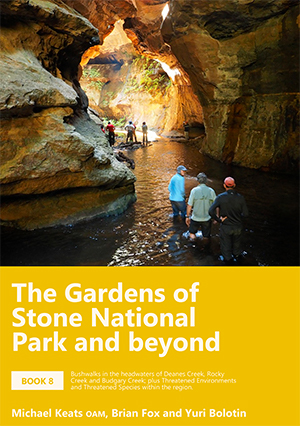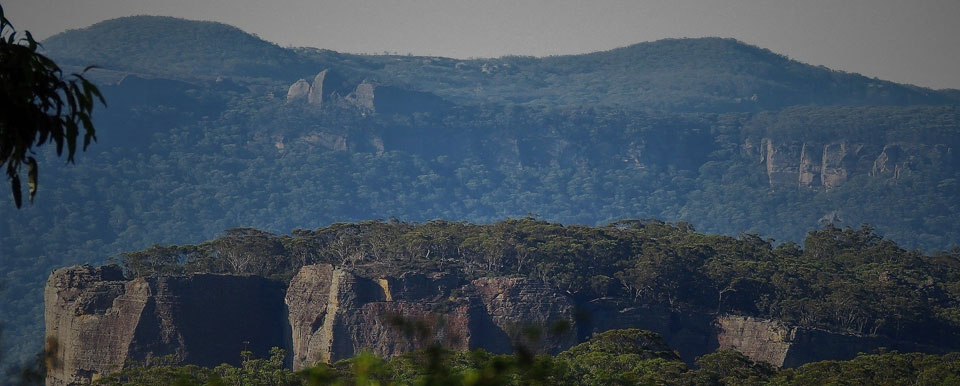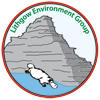Greenspot Newsroom
Greenspot successfully acquired the old Wallerawang Power Station in September 2020 after it had been closed by its former owner in 2014. The acquisition moved forward after Greenspot offered an alternative view for the site that required only a partial demolition together with plans to repurpose much of the existing infrastructure.Bush Explorers

It is a chronicle of challenges, discoveries, adventures, sweat, and research lead by Brian Fox, Michael Keats and Yuri Bolotin.
It is also your key to enjoy seldom visited places, and through words and pictures, enjoy what is literally on Sydney’s back door step.
This site is an important resource for bush walkers and others interested in the Australian Bush.
Gardens of Stone Local Visitor's Map

Visit and learn about the magnificent Gardens of Stone region on the western side of the Blue Mountains and easily accessible from Sydney or the Central West. The Gardens of Stone Visitors Map shows trails, views and other main attractions. Only two hours drive from Sydney, the Gardens of Stone offer many family adventures from picknicking and sightseeing to day walks, camping, nature study, exploring industrial ruins, bird-watching, bicycling, photography, drawing and painting. The Visitors Map is full of suggested walks and trips. There are lots of opportunities for multi-day walks, rock climbing, abseiling and canyoning. Accommodation is readily available in Lithgow and other nearby towns.
The Visitors Map is in full colour, 60 by 85 cm in size, and covers the entire Gardens of Stone region at a 1:100,000 scale, making it ideal for planning your next trip to the area. Well illustrated with colour photos, the reverse side has lots of information on the plants, animals, pagoda rock formations, cliffs as well as the cultural and historic places in the region. This map has been prepared by the Gardens of Stone Alliance (Blue Mountains Conservation Society, Colong Foundation for Wilderness and Lithgow Environment Group) to promote the conservation of the Gardens of Stone Stage 2 Reserve Proposal and to showcase the many low-impact recreational opportunities in the area. There are touring routes for motor vehicles and bicycles which readily link to other routes in the Greater Blue Mountains and World Heritage Area.
Buy a map through the Blue Mountains Conservation Society website.
The Geoheritage and Geomorphology of the Sandstone Pagodas: Paper by Haydn Washington and Robert A. L. Wray
The towered ‘pagoda’ rock formations of the north-western Blue Mountains, west of Sydney, have a heartland of about 600 km2 , mostly at around 1000 metres altitude in Banks Wall and Burra Moko Head Sandstones. The pagodas are of two types: the ‘platy pagodas’ are generally stepped-cones in shape, with semi-regular ironstone bands, whereas the ‘smooth pagodas’ display less ironstone bands and are similar to many slickrock slopes found elsewhere. The platy pagodas however are an uncommon and significant geomorphic landscape feature, and are distinguished by the extent and regularity of their ironstone banding. The formation of the ironstone banding has involved the movement of iron in solution and its precipitation to form resistant bands, swirls and pipes. Questions remain as to how the ironstone banding formed, however ‘roll fronts’ of reaction between reduced Fe2+-rich water and oxygenated water may best explain the amazing ironstone shapes. The geoheritage value of the pagodas is significant, but is threatened by activities such as longwall coal mining. The pagodas and the associated slot canyons of the Blue Mountains are ideal candidates for future geological and geomorphological research.
EnergyAustralia Mt Piper Community Consultative Committee meeting notes
For meeting notes scroll to the bottom of the page.
Mt Piper Power Station Energy Recovery Proposal
This proposal was withdrawn in 2022 with EnergyAustralia stating it had formally withdrawn its application for State Significant Development (8294) and was not investigating any future waste to energy projects at the Mt Piper site.
EPA Legislation and Regulations: Energy from Waste Regulation | NSW Environment Protection Authority
Note: The above link indicates the sites declared by the NSW Government, without public consultation, for energy recovery facilities. It says "A notice revoking the gazettal of the West Lithgow Precinct map was published in the NSW Government Gazette on Friday 21 October 2022". Whilst it states the map has been revoked the designated precinct for Lithgow remains.
Centennial Coal
Centennial Coal is an Australian mining business supplying domestic and export markets. Our coal fuels around 30% of NSW’s coal-fired electricity generating capacity, while we also manage a successful export business. With the backing of Banpu, Pan-Asia’s leading independent coal producer, we deliver a superior service to our customers.
Central-West Orana Renewable Energy Zone
The NSW Government is in the development phase for the State’s first Renewable Energy Zone (REZ) in the Central-West Orana region. The Central-West Orana REZ is approximately 20,000 square kilometres centred by Dubbo and Dunedoo, on the land of the Wiradjuri, Wailwan and Kamilaroi people.
NSW Environment Protection Authority (EPA)
The NSW Environment Protection Authority (EPA) is the primary environmental regulator for New South Wales. We partner with business, government and the community to reduce pollution and waste, protect human health, and prevent degradation of the environment.
The EPA's waste hierarchy is: a set of priorities for the efficient use of resources; this underpins the objectives of the Waste Avoidance and Resource Recovery Act 2001.
The waste hierarchy is:
- Avoidance including action to reduce the amount of waste generated by households, industry and all levels of government
- Resource recovery including re-use, recycling, reprocessing and energy recovery, consistent with the most efficient use of the recovered resources
- Disposal including management of all disposal options in the most environmentally responsible manner
Read the EPA's NSW Waste Avoidance and Resource Recovery Strategy 2014-2021.
Federal Department of Climate Change, Energy, the Environment and Water
The federal Department of Climate Change, Energy, the Environment and Water designs and implements Australian Government policy and programs to protect and conserve the environment, water and heritage, promote climate action, and provide adequate, reliable and affordable energy.
Great Western Battery
The Great Western Battery is a proposed 500 MW stand-alone battery in NSW.
The name was chosen due to the project’s proximity to the Great Western Highway, one of Australia’s earliest inland roads.
The battery will be able to provide a variety of services to the grid including frequency control and load shifting, which are both necessary for the development of more renewable energy.
Total Environment Centre
Total Environment Centre was established by trailblazers of the Australian environment movement in 1972, Total Environment Centre has worked with Australian communities on more than 100 victorious campaigns - supporting positive change in business and industry, defending parks and bushland in rural and urban areas, driving debate, advocating for pure air and water, and encouraging better environmental policy.
Lithgow City Council
Lithgow City Council. Lithgow is located on the western ramparts of the Blue Mountains, 140 kilometres from Sydney. The Lithgow Local Government area totals 4,551 square kilometres from the Capertee and Wolgan Valleys in the north, Little Hartley in the east, Tarana in the south and Meadow Flat in the west.
Lithgow District Community Nursery
Lithgow District Community Nursery has a wide variety of local native plants suitable for the home garden as well as farms and businesses. The Nursery is predominantly run by volunteers who collect seed, propagate and grow the plants. It also stocks the book Native Plants Hassans Walls Reserve.
Lithgow Oberon Landcare
The Lithgow Oberon Landcare Association assists with the financial and project management undertaken by member groups in the Lithgow Oberon area including revegetation, bush regeneration, weed control, workshops and minor soil erosion management.
Environmental Defenders Office
The Environmental Defenders Office (EDO) runs bold and ground-breaking environmental cases to protect our natural world. They help the community use the law to protect the environment.
WaterNSW
The Greater Sydney drinking water catchment supplies water for more than four million people. An independent audit of the health of this catchment is required at least every three years. The catchment covers an area of 16,000 km2 and supplies drinking water to more than 4 million people in Sydney, the Blue Mountains and the Illawarra. The audit report provides a valuable benchmark for the government, private sector and the community, who share common interests in the supply of raw drinking water and the health of the catchment.
View the 2019-2022 Catchment Audit.
Environment Protection and Biodiversity Conservation Act 1999
The Environment Protection and Biodiversity Conservation Act 1999 (the EPBC Act) is the Australian Government’s central piece of environmental legislation. It provides a legal framework to protect and manage nationally and internationally important flora, fauna, ecological communities and heritage places — defined in the EPBC Act as matters of national environmental significance.
Clean Energy Regulator
Use this website to find out who are Australia's biggest polluters.
Conservation Volunteers Australia
Conservation Volunteers Australia recruits volunteers from Australia and around the world to join important environmental and wildlife conservation projects.
Blue Mountains Conservation Society
Founded in 1961, the Blue Mountains Conservation Society is a voluntary group of about nine hundred members helping to conserve the World Heritage Blue Mountains region.
Wilderness Australia
Wilderness Australia (formerly the Colong Foundation for Wilderness), the successor to Myles Dunphy's National Parks and Primitive Areas Council, is Australia's longest-serving community advocate for wilderness. Visit their website.
Nature Conservation Council of NSW
The Nature Conservation Council of NSW works to conserve nature and protect the water we drink, the air we breathe and the places we love. It's a non-profit, non-government organisation representing 120 community environment groups across NSW. Its aim is to protect our precious natural environment.
Rivers SOS
Rivers SOS is an alliance of over 40 environmental and community groups concerned with the wrecking of rivers in New South Wales by mining operations.
EnergyAustralia
EnergyAustralia is one of the largest capacity electricity generators in the National Electricity Market.
Most of EnergyAustralia's generation occurs at five power stations. These are Mt Piper and Wallerawang (decommissioned) near Lithgow, and Colongra, Vales Point and Munmorah on the Central Coast.
Nearby Pine Dale open cut coal mine, currently under care and maintenance, previously produced up to 350,000 tonnes of black coal each year for EnergyAustralia’s Mt Piper power station.
EnergyAustralia also owns and operates Lamberts North Ash Repository, facilitating the disposal of ash produced as a byproduct of the Mt Piper power station's operation.
National Pollutant Inventory (NPI)
The National Pollutant Inventory (NPI) provides the community, industry and government with free information about substance emissions in Australia. It has emission estimates for 93 toxic substances and the source and location of these emissions.
NSW Department of Planning and Environment
The NSW Department of Planning and Environment supports sustainable growth in NSW. Their work includes:
- Long-term planning for the State’s regions
- Driving well-located housing and employment land
- Assessing State significant development proposals, and
- Ensuring the planning system is efficient and effective
The Department works closely with local government, stakeholders and the community. Provide your feedback on Major Projects On Exhibition.
Australia Institute
The Australia Institute is an economic "think tank" organisation.
The Big Fix
The Big Fix is an arts, community and media development service working cross-sector to build social, economic and environmental resilience. It seeks to inspire, engage and empower everyone to collaborate in growing a solutions-focused culture.
Environmental Justice Australia
Environmental Justice Australia uses the law to protect and restore Australia’s environment. We will work to achieve better environmental laws that truly protect our environment, for the benefit of all Australians. We will make sure communities have a real say in decisions that affect their environment.
National Toxics Network (NTN)
The National Toxics Network (NTN) is a community based network working to ensure a toxic-free future for all. NTN was formed in 1993 and has grown as a national network giving a voice to community and environmental organisations across Australia, New Zealand and the South Pacific.

